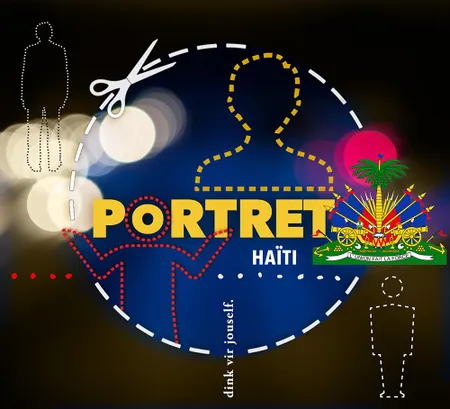THE Republic of Haiti is slightly smaller than Lesotho but more densely inhabited, with a population of just over 11 million. It covers a little less than half of the tropical island of Hispaniola in the Caribbean Sea; the Dominican Republic is in the eastern part of the island. To the northwest is Cuba, then the Bahamas, and further on is the south coast of Florida. To the east are Puerto Rico and the British and American Virgin Islands.
Haiti has once again descended into chaos in recent weeks. In late February, the country's powerful criminal gangs, which already controlled large parts of the economy and most of the capital, Port-au-Prince, launched a series of attacks on police stations, prisons and other government buildings. Prisoners were freed and several buildings were burnt down. Dozens of people have died and about 15,000 were forced to flee their homes. The acting prime minister, Ariel Henry, said on Monday that he would resign if a presidential transition council were to be established.
This is part of a pattern that Haiti can't seem to escape: a new head of state who sometimes starts off well but soon succumbs to the temptations of autocratic control, revenge and corruption; rigged elections, uprisings and violence; a coup d'état; another new president. In between there is the perpetual manipulation and interference by the US or another great power.
Lees hierdie artikel in Afrikaans:
The worst dictators have the best chance of staying in power for more than a year or two in Haiti. The best examples are François “Papa Doc” Duvalier (1957 to 1971) and his son, Jean-Claude “Baby Doc” Duvalier (1971 to 1986). Jean-Bertrand Aristide also lasted longer than average; he was the president on and off several times between 1991 and 2004 until he was ousted once more in a coup in which the US and France may very well have played a role. Aristide defected to South Africa after this but returned to Haiti in 2011.
To try to understand this bloody and tumultuous history of the past half century, one has to go much further back in history, to the time before the Europeans realised there was an enormous part of the planet they knew nothing about.
By the time Christopher Columbus landed on what is today Hispaniola at the end of the 15th century, the Taíno were the predominant inhabitants of the island. The Taíno have their origins among the Arawak tribes of the Orinoco delta in today's Venezuela, from where they spread as early as 2,500 years ago to today's Caribbean Islands and elsewhere.
The Taíno developed a peaceful and resourceful culture on Hispaniola that reached a peak by the time Columbus became aware of their existence. Among other things, they cultivated cassava, sweet potatoes, maize, green beans and other crops. The English words canoe, hammock, barbecue, tobacco, hurricane and Cuba are probably of Taíno origin. They built seagoing canoes large enough to carry more than 100 paddlers.
But then came Columbus, who encountered the Taíno for the first time in 1492 in the Bahamas. He was impressed by their generosity and peacefulness, but in response he acted exactly the opposite, according to this article in Smithsonian Magazine: “They were very well built, with very handsome bodies and very good faces … They do not carry arms or know them … They should be good servants.”
Sixty years later, the Taíno had been virtually wiped out of existence. Slavery, forced labour and diseases from across the water such as smallpox, to which they had no immunity, largely spelt their end.
In their place came a mixture of people and influences from Africa, Spain and France, in particular. To this day, French and Haitian Creole are Haiti's official languages.
At the end of the 17th century, the Spanish ceded control of the western part of Hispaniola to the French. This country, then known as Saint-Domingue, became one of the richest of all the French colonies. Thanks to the island's abundant natural resources and the free forced labour of the approximately 800,000 slaves imported from Africa, by the 1770s Saint-Domingue produced about 40% of all the sugar and 60% of all the coffee imported into Europe.
The inhumanity to which they were subjected caused the people of Haiti to revolt in 1791 under the leadership of former slaves such as Toussaint Louverture and Jean-Jacques Dessalines. They declared independence from France on January 1, 1804, becoming the only country in history born from a successful slave revolt. Dessalines was named Emperor of the First Empire of Haiti by his generals later that year.
The fruits of the revolution soon turned sour. France and the other colonial powers isolated Haiti and imposed embargoes and other punitive measures that brought agricultural production and thus the economy to a standstill. After this, one crisis after another followed over the centuries, including the American occupation of 1915 to 1934.
In 2010, a catastrophic earthquake struck the island, killing more than 200,000 people and leaving millions homeless. The resulting instability worsened in 2021 when the president, Jovenel Moïse, was assassinated by a group of foreign mercenaries.
It is unlikely that in the coming weeks anything wil happen that Haiti has not experienced before in one way or another. It will get worse before it can get better — if it ever does.
♦ VWB ♦
BE PART OF THE CONVERSATION: Go to the bottom of this page to share your opinion. We look forward to hearing from you.



To comment on this article, register (it's fast and free) or log in.
First read Vrye Weekblad's Comment Policy before commenting.